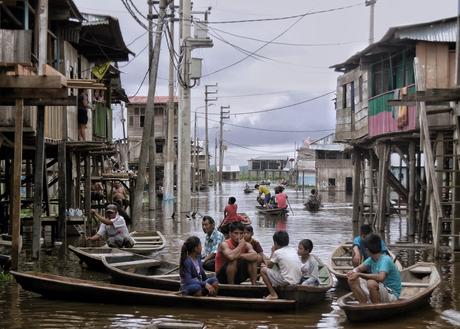DPU Working Paper - No. 184
Home as a catalyst for resilience

23 December 2016
Author: Belen Desmaison Estrada
Publication Date: December 2016
Download this paper:
This paper explores the meaning of ‘home’ in a community in the process of relocation. ‘Home’ is presented as a catalyst for resilience, which is explored beyond its physical dimension by exposing the social, economic, political, and cultural factors that influence resilience as well as the relationships between them and the built-environment. Relocation settlements are cities built from scratch, offering unique opportunities to enable resilience of people by transforming housing into ‘homes’ and propelling social development.
This paper argues that an understanding of multiplicities in terms of actors, scales, and dimensions foments the possibilities of achieving ‘home’ for all. The more complex, encompassing, and inclusive the concept of ‘home’, the more opportunities for enabling built-in resilience and achieving sustainable social development. On the other hand, the oversimplification of this complexity leads to the consolidation of already-existing patterns of poverty and vulnerability.
The case study is the community of Belén in Iquitos, located in the rainforest of Peru,which is currently in the process of relocation due to extensive flooding in the area. An analysis of the understanding of ‘home’ for Belenians, both in their current settlement and in the relocation proposal, hopes to clarify the relationship between socio-economic risks and opportunities and the built-environment. Instances of inequity especially pertain more vulnerable groups like women and children whose problems, including family violence and school abandonment, may be exacerbated by spatial configurations that are deemed as ‘traditional’.
Additionally, a deconstruction beyond the design level of the on-going proposal hopes to illuminate the possibilities of the relocation site being appropriated as ‘home’ by future dwellers. The analysis of both present and future seeks to unveil vulnerabilities and opportunities in both the current reality and the proposal, allowing recommendations to increase the opportunities of attaining resilience both for the built-environment and, more importantly, for people themselves
This paper served as the baseline for the research project "'Home' as a catalyst for resilience: settlement relocation in the Amazon Rainforest" with the participation of researchers from the Pontificia Universidad Católica del Peru in collaboration with the Development Planning Unit, which began in December 2016. The project is part of the Initiative "Climate Resilient Cities in Latin America" promoted by the Climate Development Knowledge Network (CDKN), Fundación Futuro Latinoamericano (FFLA), and Canada's International Development Research Centre (IRDC).
 Close
Close

